Alocasia plants are known for their stunning foliages that bring tropical vibes to any room or place where they are grown. These houseplants are native to Eastern Australia and Asia.
Some alocasia varieties have leaves with stunning vein patterns and large sizes. Without any doubt, these tropical plants can add an instant exotic feel at home or office.
Plants that belong to the alocasia genus have similar traits due to their genetic connection. But alocasia varieties tend to showcase different leaf sizes, colors, and shapes.
These unique features have helped us to come up with an alocasia varieties list with pictures. Take the time to read through this list of rare alocasia varieties for more insight.
You May Also Enjoy: Why Is My Alocasia Polly Leaves Turning Yellow?
Alocasia Varieties List with Names and Pictures
There are over 100 alocasia species in the world today. Many houseplant enthusiasts find it challenging to pick the best species.
Below is a list of 20 stunning alocasia varieties with unique foliage colors, sizes, shapes, and textures. These alocasia varieties images will help you make an informed decision before buying:
Alocasia Zebrina
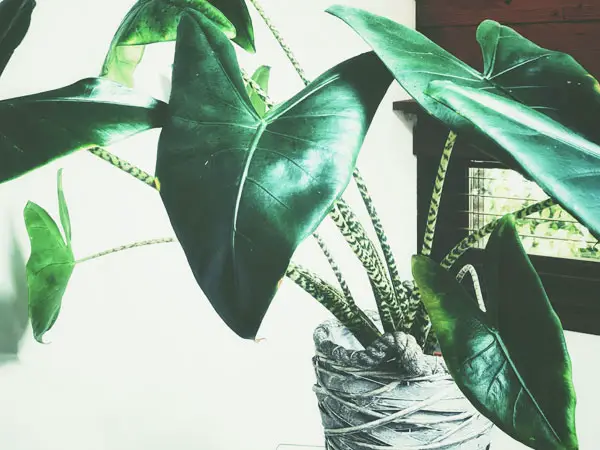
It is one of the most elegant and popular alocasia species. Zebrina have smooth and light-green leaves emerging from zebra-striped stalks.
These features make the species ideal for those individuals looking to add an exotic feeling to their surroundings.
Alocasia zebrine is easy to grow and maintain. The plant can tolerate indoor growing conditions without any problem.
The houseplant thrives under bright indirect sunlight and high humidity. Be sure to use a well-drainage potting mix and have a healthy watering schedule.
Alocasia Dragon Scale
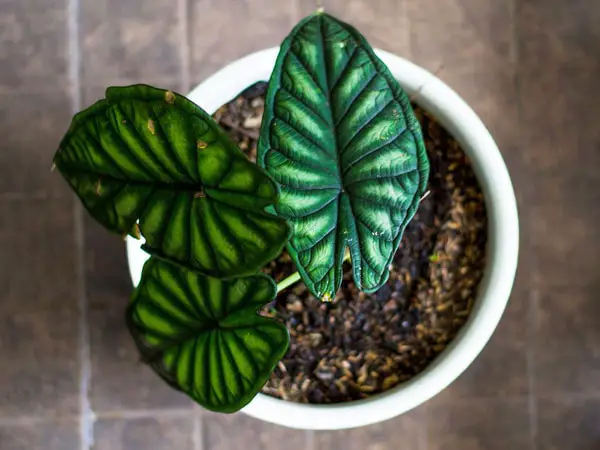
It has a striking appeal that can make a bold statement in any room. Most houseplant enthusiast loves this dragon scale for their living lounge and office.
The silvery dark green leaves with primary and secondary venation make this species stand out from others. The leaves grow up to 4-6 inches tall to bring out that tropical vibes.
Alocasia dragon scale prefers an environment with high humidity. Remember to mist the leaves several times a day to increase humidity around the plant.
You Might Also Enjoy: How to Care for Alocasia Dragon Scale Plant
Alocasia Black Velvet
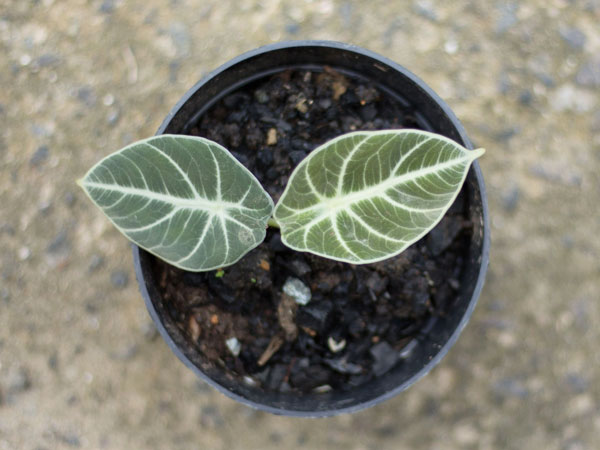
The species is also known as alocasia reginula. Black velvet is suitable for those plant owners looking for something dark and mysterious.
The thick heart-shaped leaves come with a deep black color and a velvety texture that is conspicuous in the silvery-white veins.
Black velvet is super sensitive to direct sunlight. The heat from the sun will scorch the leaves and turn them brown. The alocasia species thrive in a warm and humid environment.
You May Also Like: How to Care for Alocasia Black Velvet
Alocasia Amanzonica
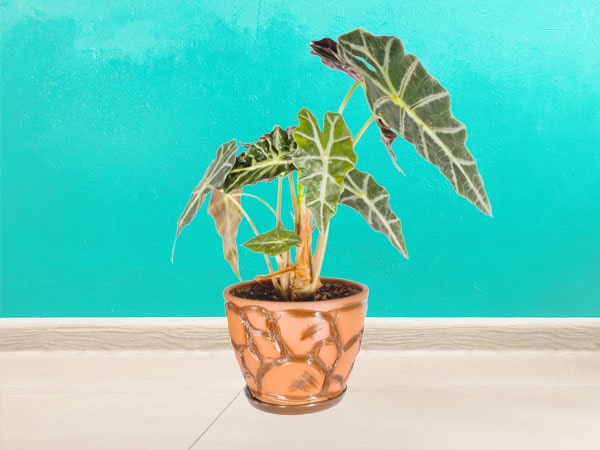
The species is popularly known as alocasia Polly. It comes with dark green leaves that have an arrow and shield shape. The narrow leaves are adorned with thick white veins.
The plant grows up to 18-inches tall with 16-inch leaves. The compact design makes the species ideal for workstations and desktops.
Alocasia Polly flourishes under warm and humid surroundings. Keep the houseplant away from direct sunlight exposure.
Alocasia Cuprea
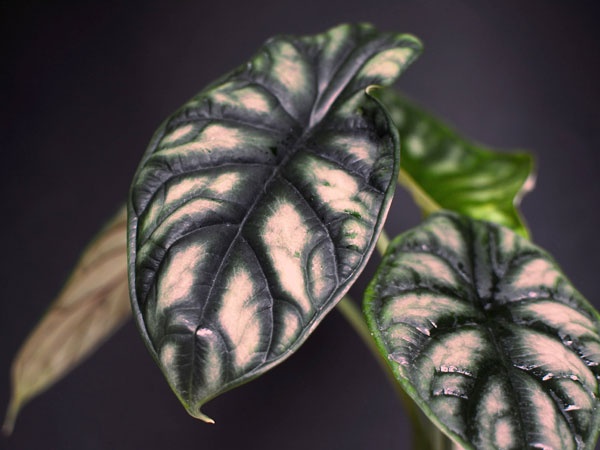
It is a jewel alocasia type that features coppery-green and silver shimmering leaves. Cuprea foliages have dark green primary veins that set them apart from other species.
The spotting reddish color underneath the leaves brings out the exotic appeal of the plant. The species can be grown in a terrarium and loves high humidity.
Alocasia cuprea is fussy and needs ultimate care. Otherwise, you risk losing the plant in the long run. Be sure to keep the houseplant away from direct sunlight exposure.
You May Also Like: Why Is My Alocasia Polly Dying?
Alocasia Sanderiana
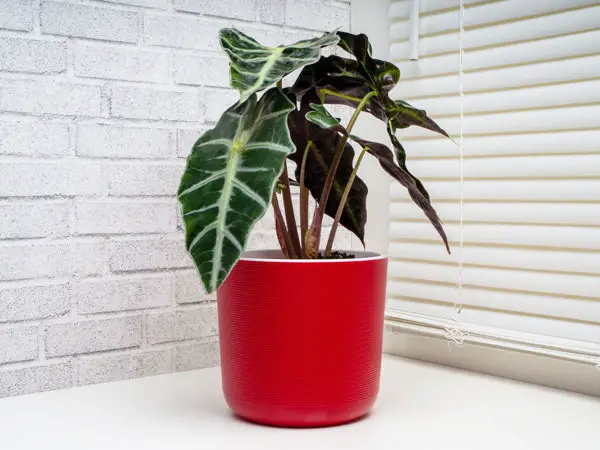
It is also known as the Kris plant. The dramatic-looking leaves make this alocasia species quite noticeable in many plant stores.
Alocasia sanderiana comes with V-shaped and dark-green leaves. These leaves have wavy edges and thick veins running throughout from the edges.
The houseplant grows up to 4-6 inches tall. It thrives under bright indirect sunlight and loves moderate watering. High humidity makes the veins in the leaves prominent.
Alocasia Frydek
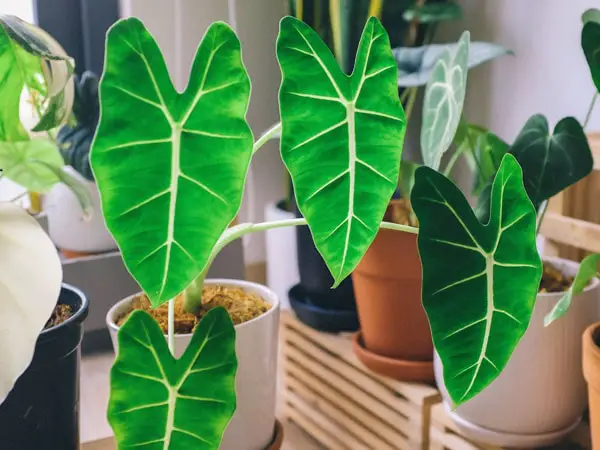
The alocasia species is an excellent alternative to black velvet. It is ideal for those houseplant enthusiasts that love something slightly dark.
The alocasia frydek has light green leaves with creamy-white primary veins. The brightness and texture of the leaves help to makes a bold statement in any space.
The houseplant grows up to 2-3 feet tall with 16-inch leaves, and it is too sensitive to direct sunlight exposure. The alocasia species thrives under bright indirect sunlight.
You Can Also Read: 25 Philodendron Varieties with Names and Pictures
Alocasia Lauterbachiana
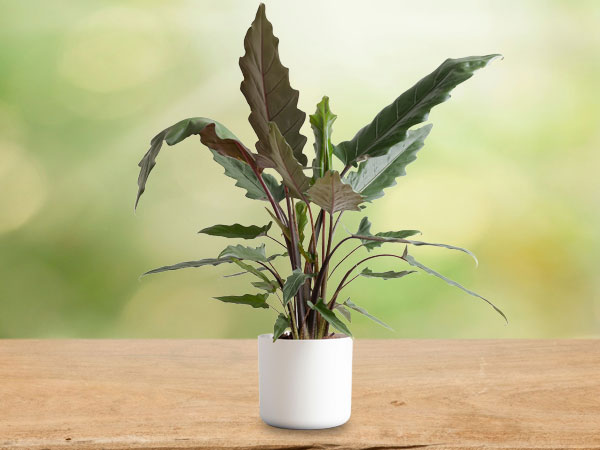
The alocasia species is a perfect example of an ornamental houseplant. Lauterbachiana has stunning long and narrow leaves marked with wavy edges.
It experiences vigorous growth when planted in a suitable condition. It grows up to 3-5 feet wide and 3 feet tall.
The plant owner needs to fertilize the species to experience incredible growth patterns. The water-soluble fertilizer helps the plant generate impressive foliage.
Alocasia Brisbanensis
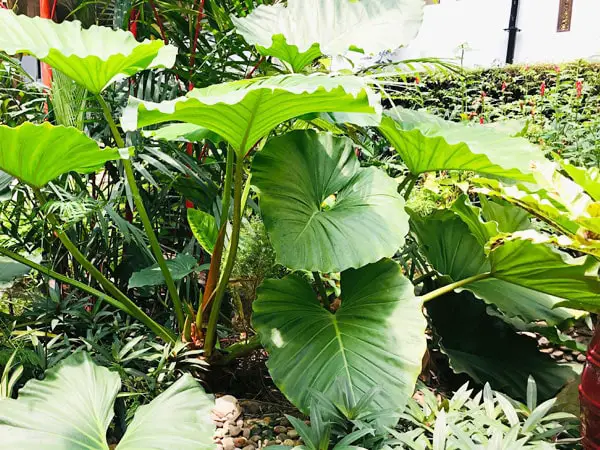
This tropical plant is native to Eastern Australia. The alocasia variety is taller than other species in the world. It grows up to 6 feet tall, and leaves can reach 3 feet in length.
Alocasia Brisbanensis is a perfect plant for outdoor space. The glossy green leaves help to bring out tropical vibes in your yard.
Keep in mind that the plant flourishes under bright indirect sunlight and moist soil. I recommend planting it under the shade and provide high humidity.
You May Also Like: Why Are My Aralia Leaves Turning Yellow?
Alocasia Reversa
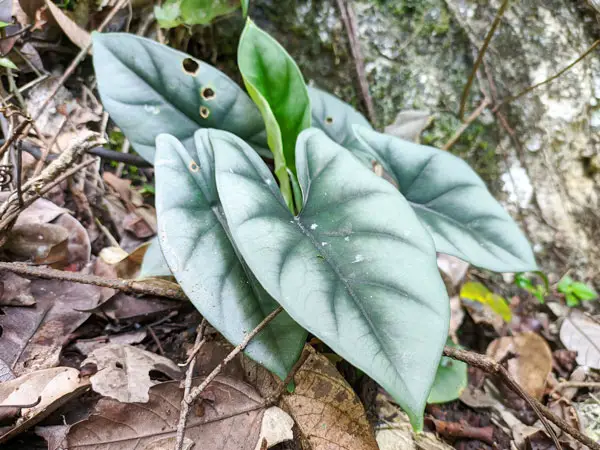
The alocasia species has reverse features seen in other alocasia varieties. The leaves have dark-green veins and mid-sections. The rest of the leaf is silvery and light green.
This small growing alocasia variety is super ideal for an indoor environment. The leaves grow up to 8-inches and the entire plant up to 16-inches.
The houseplant is tolerant to the low lighting condition. It can also endure indoor growing dynamics, but it might experience some damages.
Alocasia Cucullata
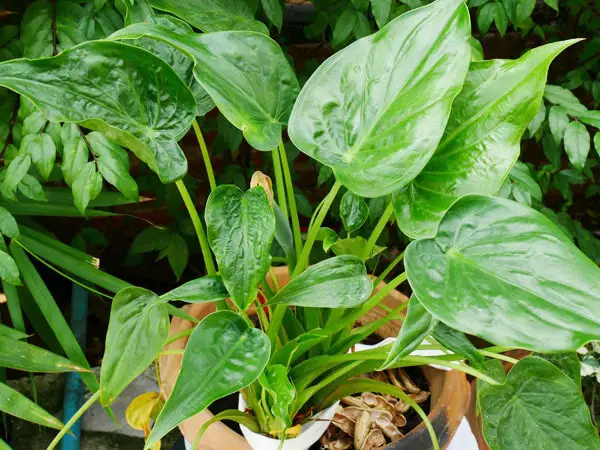
It is the simplest alocasia variety. With elegant stalks and heart-shaped leaves, the cucullata is a perfect choice for indoor space.
Most Buddha enthusiasts believe that the plant brings more fortune. If you are a superstitious person, consider this alocasia species.
Alocasia cucullata is native to Thailand and Laos. It implies that the plant thrives in a warm and humid environment.
Plant owners should consider moderate watering and fertilization only during the growing season. Both overwatering and over-fertilization are the leading cause of alocasia death.
Alocasia Silver Dragon
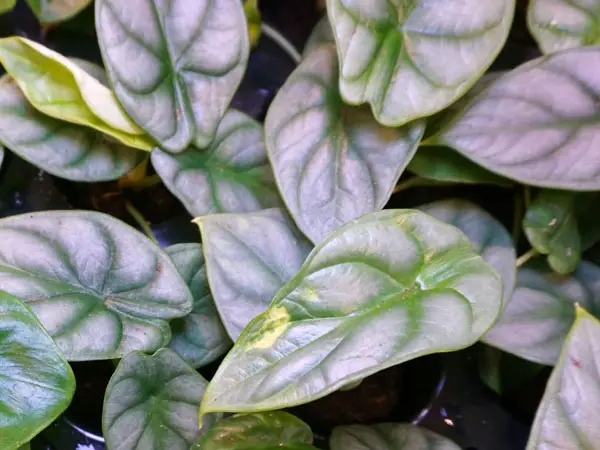
The alocasia species has some close similarities to the dragon scale counterpart. But this species has silvery-green leaves with green primary veins.
It is a small-growing alocasia variety ideal for terrariums due to the warm and humid environment. It grows up to 1.6 feet tall with medium size leaves.
The plant requires moderate watering, high humidity, indirect sunlight, and well-drained soil. These care requirements will make plants experience better growth.
Alocasia Melo
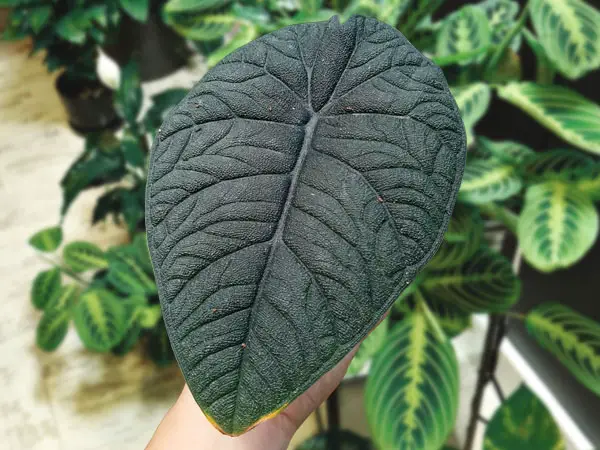
If you are looking for alocasia species with rug texture, Melo won’t disappoint. The rug texture makes the primary and secondary veins more visible on the leaves.
Alocasia Melo grows up to 1-2 feet tall with leaves of 20-inches long and 10-inches wide. The deep green colors tend to match perfectly with the rugged texture of the leaves.
This tropical plant loves bright indirect sunlight, high humidity, and a well-drain potting mix. Regular fertilization during the growing season is recommended to maintain the deep green colors.
Alocasia Odora
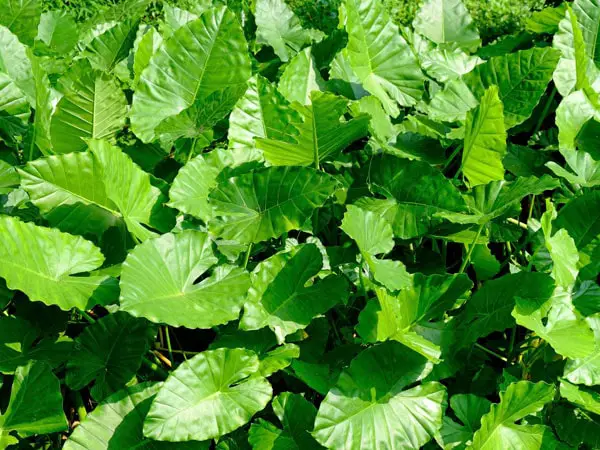
The alocasia species is also known as a night-scented lily. Odora grows up to 4-8 feet tall with paddle-shaped leaves of about 2 feet long and 1 foot wide.
This tropical plant produces fragrant flowers that look like calla lily flowers. These flowers usually have pale peach spathe and spadix.
Odora is native to East and Southeast Asia. It thrives under the shade and loves organic-rich moist soil. It can also be grown in the greenhouse or outdoor where the climate is friendly.
Alocasia macrorrhiza
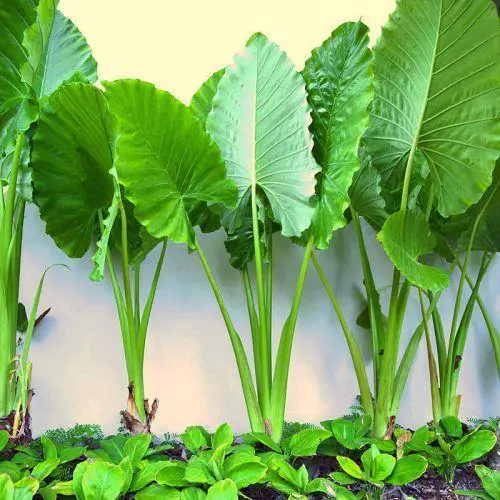
It is also known as Giant taro. Macrorrhiza has tall rigid stalks with large leaves. These foliages usually have wavy and ruffled edges.
The tropical plant is not ideal for indoor space since it grows to 12-15 feet tall. The leaves can also reach 3-6 feet long and 2-4 feet wide.
Alocasia macrorrhiza loves organic-rich moist soil and indirect sunlight exposure. Too much direct sunlight might cause leaves to droop and curl.
Alocasia Wentii

Wentii has large leaves that can reach 12-inches in length. These leaves have a jeweled deep-green shade with contrasting purple-bronze underneath.
Mature alocasia wentii have deeper colors than their juvenile counterparts. The oval-shaped design makes the tropical plant ideal for any indoor space.
The stunning canopy and striking foliage colors allow the houseplant to make a bold statement in any room or office space.
Alocasia Sarawakensis
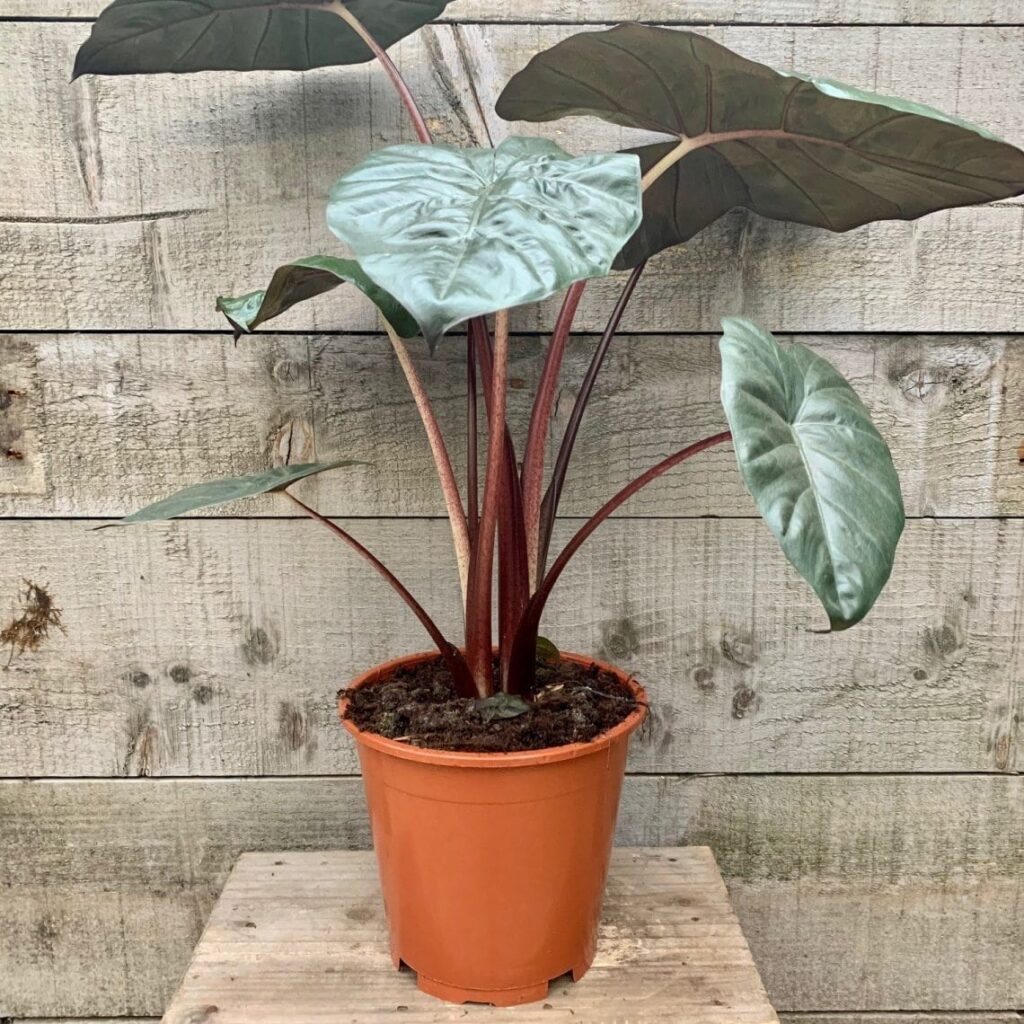
The tropical plant is bold and brings tropical vibes to any room. It produces a grayish-green leaf surface with a chocolate milk color underneath.
Alocasia sarawakensis is native to the tropical and subtropical of Eastern Australia and Asia. It grows to 8 feet tall and 5 feet wide.
This ornamental houseplant requires less maintenance and caring routines. It thrives in a warm and humid environment.
Alocasia Reginae

It is among rare alocasia varieties that produce more leaves and multiple crowns. The leaf surface is deep green or bluish-green with dark green primary veins.
The plant is native to the Borneo forest and thrives under indirect sunlight. The provision of a warm and humid environment facilitates better growth and production of beautiful foliages.
This small plant grows faster and is ideal for decoration in the house or office. Regular transplant is recommended due to frequent multiplication.
Alocasia Portei
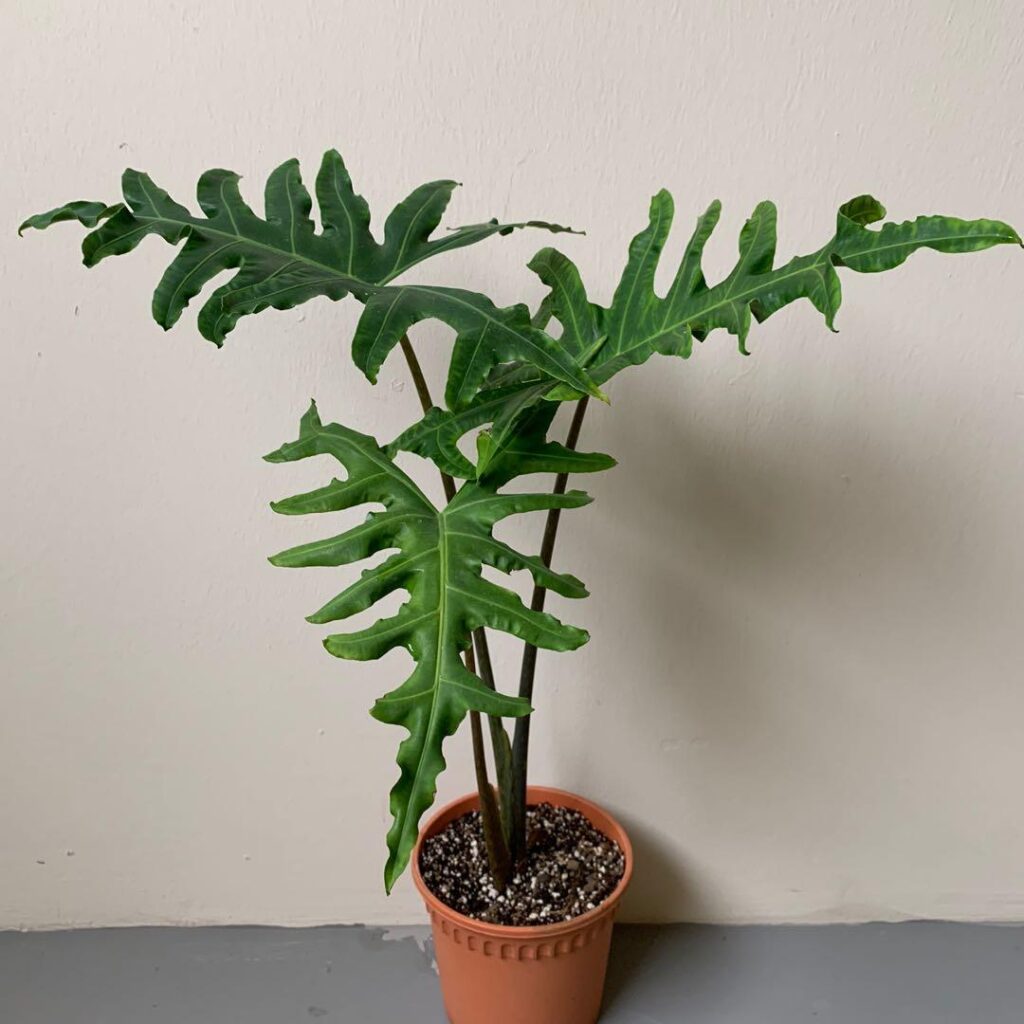
The dramatic-looking leaves make this alocasia species loveable. The foliage brings an exotic and tropical feeling at home or office.
Alocasia portei leaves are evergreen and smooth. The attractive purple color of stems and petiole make a bold statement in any space.
The plant is native to Southeast Asia and requires minimal maintenance. It can be grown in containers and handled by anyone regardless of the experience.
Alocasia Infernalis
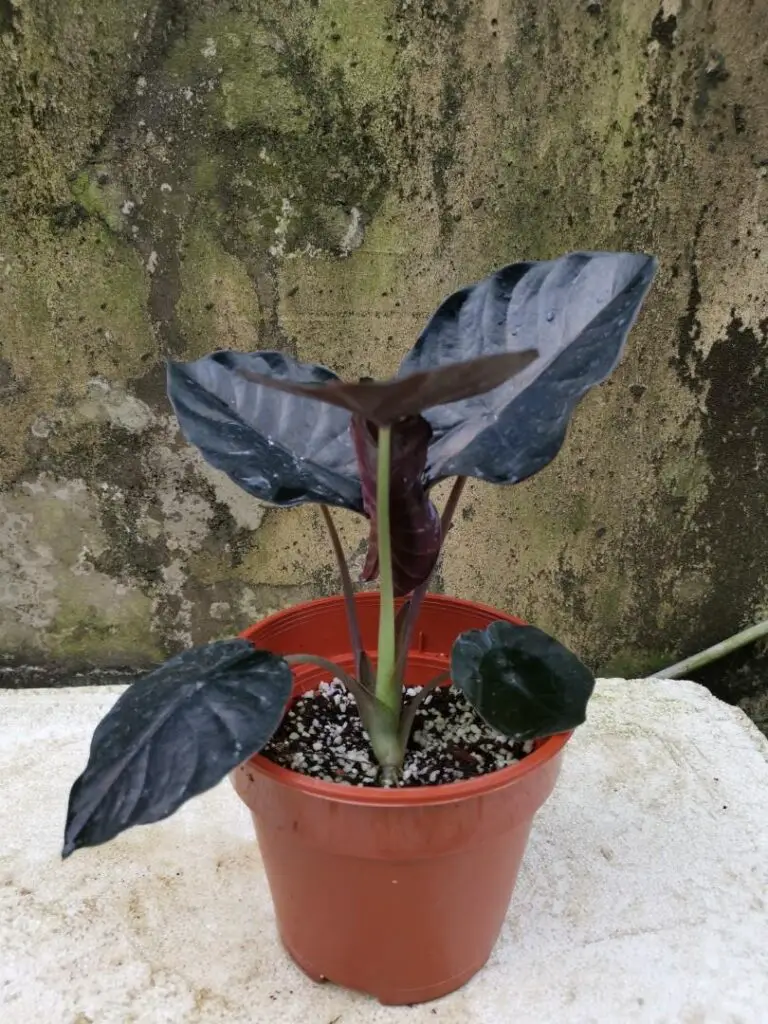
The beautiful black sheen foliages make this plant stand out from other alocasia varieties. The small size makes it ideal for desktops or office space.
The oval-shaped leaves come with big veins that run throughout. The plant can be grown in a terrarium where there is a warm and humid condition.
The ornamental plant is native to Southeast and Eastern Malaysia forests. It thrives under bright indirect sunlight and organic-rich moist soil.
You Might Also Like: Why Are My Alocasia Leaves Curling?
In Conclusion
Alocasia varieties have easy to care requirements. But these different types of alocasia have unique features that define their growing space.
Some alocasia species are ideal for indoor space and others for outdoor habitat. Both have stunning foliage colors to make a bold statement in any place.
Take the time to read through our list of alocasia varieties with names and pictures before making any purchase. I hope the information provided was helpful.
More Sources and References
- Department of Extension. Elephant Ear Varieties. University of Wisconsin.
- Editor. Alocasia Species. North Carolina State University.
- Gail Hansen. Elephant Ear Species. University of Florida.
